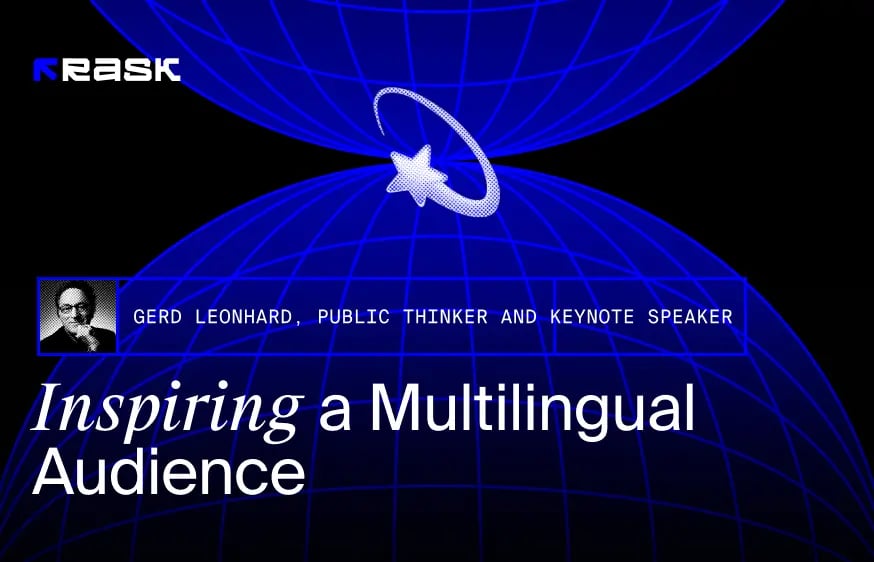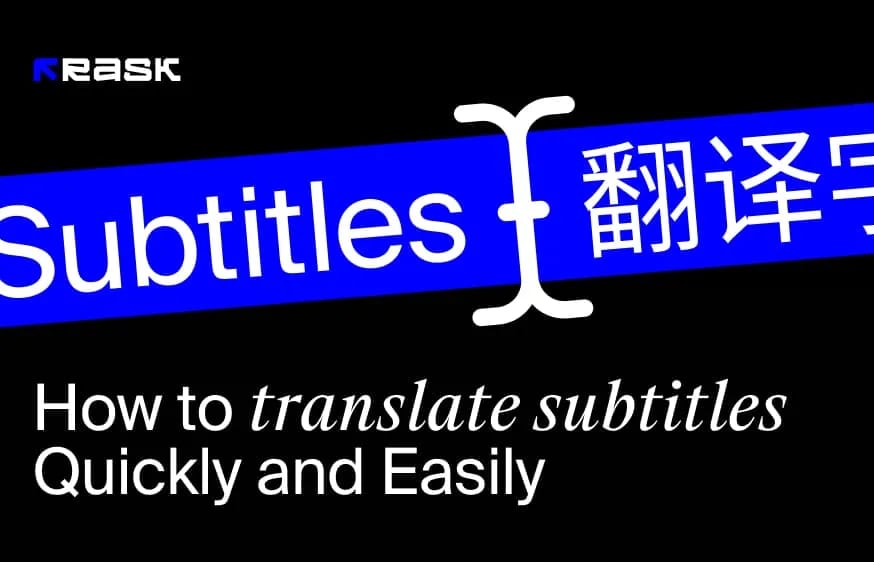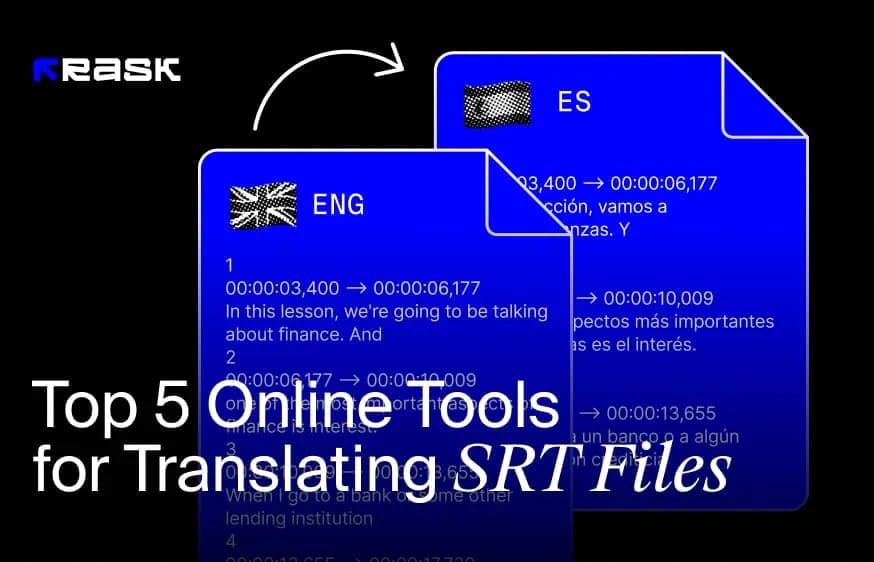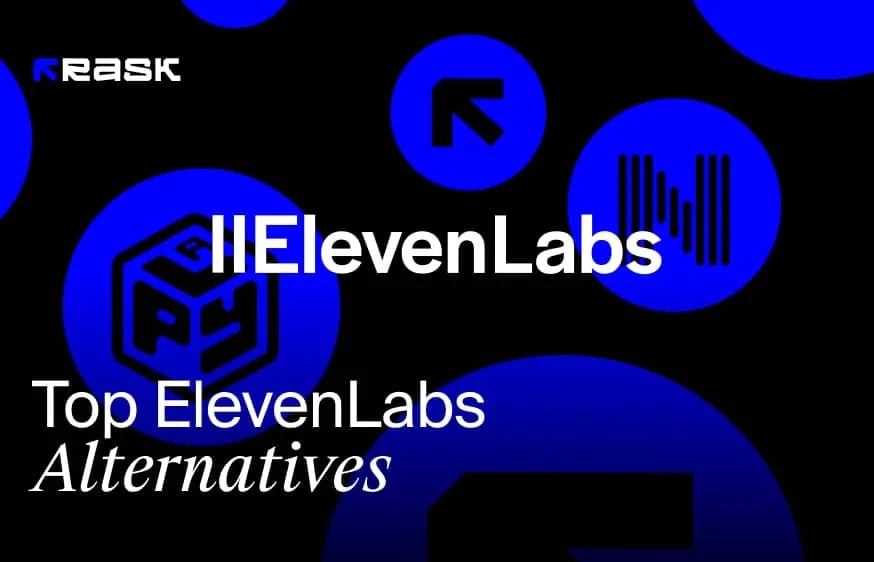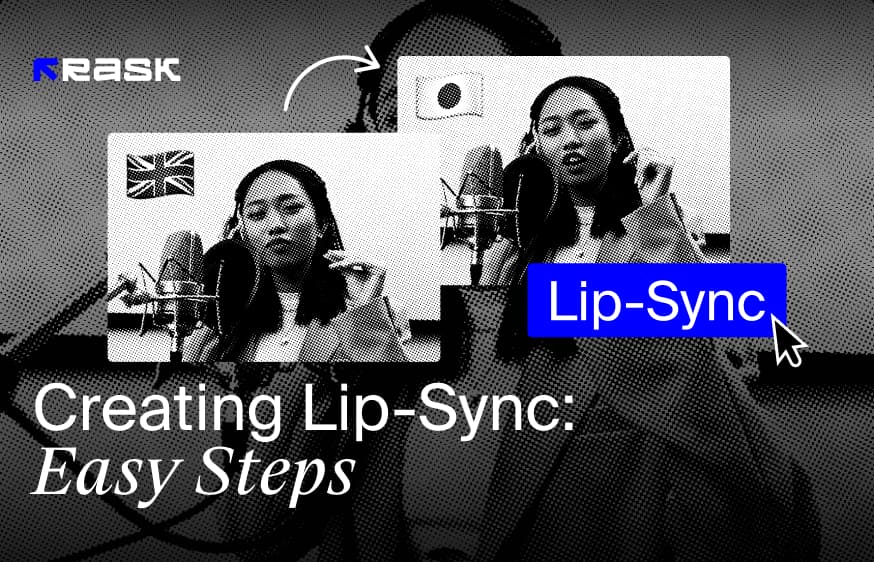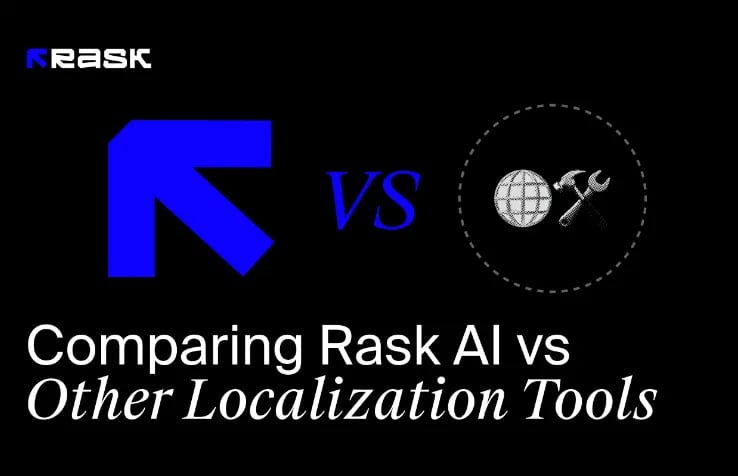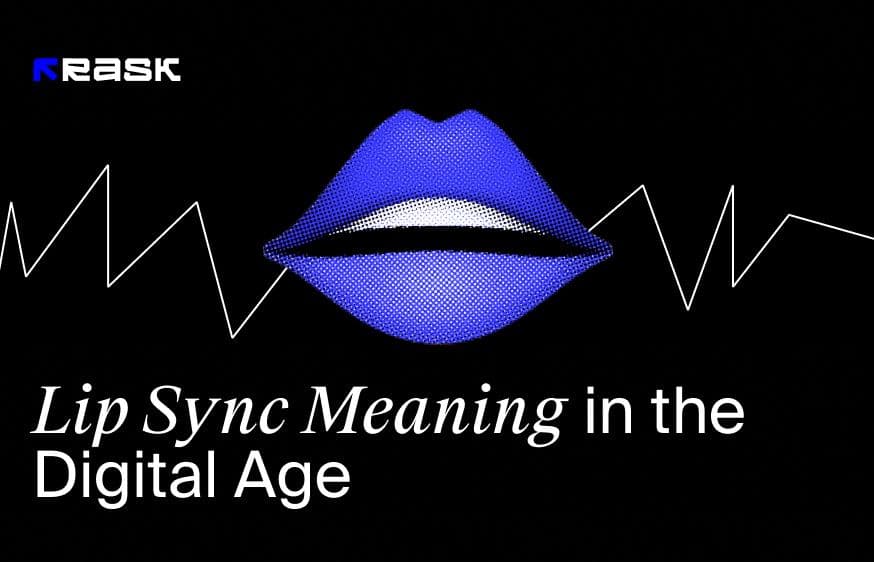Videos have long been considered a great source of entertainment and a way to spend a cozy time at home. Now, videos have transformed into powerful tools for companies of all sizes and act as a way to attract relevant customers and keep interest for longer (though they are still used for entertainment by some).
Even though it is a visual medium, the majority of videos have audio elements as well. While the video context will play the key role, how audio works also affects the final user experience and, therefore, the decision. And when we talk about publishing videos only to your small locale - no extra work or effort is needed.
Speaking about how to create localized videos is definitely another story. Whether it is a dialogue, background music, narrative voiceovers, or fun graphics - audio should also be localized. Translation is a good option if you want to test the market, but voiceovers and dubbing are now a must-have practice for any business or creator looking to grow revenue by breaking into new markets with video content.
What is Lip Sync in Audio and Video Production?
Lip-sync is at the top of the voiceover food chain. It is also known as lip-sync dubbing, and it is currently the most complex and demanding of all the voiceover formats.
Simply put, lip sync is when the voice in the new language replaces and matches the lip movements of the video speaker in their original language. As you may already have guessed, the goal of the process is to provide the most accurate synchronization of new spoken dialogue with the on-screen speaker's lip movements so viewers won't even recognize that the video is originally in another language.
And this isn't an easy task.
Languages have different words to convey the same meaning, and in one language, it can take 1-2 words to complete the sentence, while in another, it will require 5-6, so matching the audio becomes harder with specific language combinations like English and German.
Being complicated enough, it also requires you to follow the specific tone of voice to sync with the original speaker's lip movements as accurately as possible.
That is why special translators have long been the only option to lip-sync the video. While they are still invited by some film producers, companies and creators now turn to an AI-powered lip syncing app.
When using specialists, who should be very talented people, instead of a lip sync video maker, lip-sync is certainly not a budget option. That's one of the main reasons why it has long been used solely by large video and film production companies. But the lip sync video maker allows any creator and businesses of all sizes to benefit from proper localization, offering a cost-effective but accurate way to lip-sync a video in 2023.
Difference Between Voice Dubbing and Lip Synchronization
Dubbing refers to replacing the original audio with a new one. In most cases, dubbing is considered as a video translation service.
Dubbing is mostly focused on the timing of the silence between words, so voice actors should have in-depth expertise in matching every element of the audio. It tends to be a very complex job that can now be simplified and automated with an AI video editor.
In contrast to dubbing, the lip-sync process is considered to be more like a fine-tuning of that process. And as we already mentioned, it is at the top of the film or video production process, so it comes after dubbing. Lyp-sync offers a more accurate and natural experience of the new language, making each sound and syllable view perfectly synchronized with the speaker's mouth seen within the video.
Being even more complex than dubbing, AI's algorithms in an app can help streamline the process and allow creators to easily make lip sync for their videos for an authentic user experience.
What is the Difference Between Voiceover Translation and Dubbing?
Regardless of whether you are a seasoned creator or a business owner trying your hand in a new market for the first time, most confuse all of the terms used in the video marketing domain. So let's explore the new differences you may want to know to get a clear picture of hows and whys.
Voiceovers often provide a word-for-word interpretation or a summary of the ongoing dialog. For example, a voiceover in an ad may describe the pros of purchasing a specific product, while an actor on the screen will only demonstrate the screen.
Dubbing is more often used for localization since its goal is to replace the original audio with a new one in a different language for a specific locale. Dubbing always includes accurate translation with synchronized timing, but in most cases, the new audio doesn't match the movements of lips of the character speaking in the original audio, so this doesn't feel authentic for new target audiences, reducing localization success.
What is Phrase-Sync Dubbing?
Compared to lip-sync dubbing, phrase-sync dubbing - also called phrase sync - doesn't aim to perfectly match the new spoken audio to the lip movements of the on-screen speakers.
As the name implies, spoken-word lip-sync will match the dialogue phrase by phrase instead of word by word. As a result, whenever a speaker stops and starts speaking in the original language, the localized phrase-synced version of videos will have to match the same timing.
Since the level of the audio and visual synchronization is far less precise, phrase-sync dubbing won't provide an authentic experience as complete synchronization. And it takes, on average, six times faster compared to lip-sync dubbing to complete.
As you might have expected, phrase-sync dubbing is much cheaper than regular one and might be used when it's not necessary for the viewers to "believe" that the speakers are actually speaking the new language.
What is Non-Synced Dubbing?
Compared to lip-sync dubbing and phrase-sync dubbing, in the case of non-synced dubbing music videos, there will be no need to match new localized spoken songs and any other audio with any of the lip movements of the speaker.
The translated dialogue should be accurate and faithful to the original, but there is no need for close or even approximate synchronization. As a result, this is a cheaper and quicker way to localize user generated content in 2023 - though the results will be of the same low level.
This is the type of dubbing that is mostly used in factual content ( documentaries, music videos or training videos for example) where the need for the viewers to believe the new language is the original one is lower.
The Complex Art of Lip Sync Video
As we mentioned, the process of matching the spoken dialogue with the lip movements is a challenging process. In fact, we can call it art, so it isn't surprising that it was traditionally done only by humans. While human specialists are still there and can assist in the process, there are many lip sync apps powered by AI that can simplify and speed up the process without sacrificing quality.
Even though most believe that AI lip sync video makers will provide robotic audio, the times have changed and now provide the most authentic experience for the viewer. Working with Natural Language Processing (NLP), Artificial Intelligence (AI), and Machine Learning (ML), the best lip sync apps offer key components to create effective lip sync localization:
- Emotion: Best lip sync apps are able to convey subtleties like sadness, happiness, and sarcasm, giving depth of emotions and overall performance. This relies on the ability of the lip sync video maker to learn from different audios, exploring different emotions and mimicking them when generating new language.
- Anticipation: Leading motions before main mouth movements help increase the authenticity of dialogue. For instance, parting lips slightly before specific sounds.
- Secondary motion: Face gestures like eye darts and eyebrow movements that surround the mouth bring life to faces. These are considered to be supporting motions that have to be in harmony with the key lip movements to grow authenticity.
- Personality: Each speaker's personality and manners should also be followed when lip-syncing the new dialogue. So, each speaker's tone of voice and manners should also differ in case there are some speakers. For that, you can either hire several specialists or use the best lip sync apps that can track different personas within the video and highlight their personalities.
- Believability: The main goal of the lip-sync process is to make the new dialogue feel grounded and make viewers believe it is the original language of the video. Therefore, the accuracy of the process will affect the final result, so choosing the best lip sync apps is the way to go.
What is an AI Video Editor?
AI video editor to lip-sync the video allows companies to stay ahead of the curve in 2023. With costs for localization specialists, an app makes it twice as easy and cheaper to build a strong localization strategy without breaking the bank.
Artificial Intelligence (AI) has already proven its ability to speed up and simplify the localization, translation, dubbing, voiceover, and, therefore, lip-sync processes for both creators and large brands.
AI and Machine Learning in Lip Sync Apps
Practice-proven advancements in lip sync animation through the use of advanced technologies like AI and ML have quickly changed the localization industry.
There are companies that offer booth specialists that work alongside AI to lip-sync the music video, while companies can also delegate it to the best lip sync apps. Although each songs and video editing app has its own functionality, the key functionality of the lip syncing video applications often includes:
- Automated mouth position mapping: lip sync video applications are able to analyze voice tracks to find phonemes and map them to appropriate mouth positions while also inserting them in the right spots in videos timeline automatically. This reduces up to 80% of the manual efforts the human editor would do for a high price.
- Lip sync refinement: Being powered by AI, some lip sync video editors can also help polish and refine generated lip sync automatically, so the final version of the video looks more natural through techniques like adding anticipation motions.
- Emotion and expression analysis: As we mentioned, AI and ML algorithms used in lip sync video editors are able to identify emotional cues in voice tracks and songs. They can also modify mouth movements to reflect the specific emotion as accurately as possible. This has been shown to make a lip sync, so it is easier for the viewers to believe that the new language used in the video is the original one, increasing localization results.
- 3D facial rigging: While this one refers to advanced video editing features, some lip sync apps powered by ML can quickly rig 3D heads and faces, considering and covering the entire range of blended shapes and expressions. This feature can power up the work of lip sync artists.
- Lip sync for localization: Best lip sync apps are used not only to lip syncing the video but also for the entire localization. That is because they allow translation to other languages, speeding up the process and removing background noises (though these are only two key features to mention).
Let's Take A Look at the Best Lip Sync Apps
1. Rask AI
Rask AI is the leading dubbing and localization video maker. Being used by large songs, educational and other companies and first-time creators, it is powered with AI and offers every video maker and functionality you may need to localize your videos (from podcasts, music videos to educational videos and films without time limitations).
Aside from lip syncing functionality, this app allows creators to quickly create voiceovers for over 29 languages, translate the amazing music video or any other video content to over 130 languages, lip sync video effortlessly, and localize it via sharing options and integrations the video maker has to offer.
The best thing about Rask AI app is that it allows you to keep your own voice throughout all languages for translation and dubbing, meaning a consistent and authentic experience for your new target audience.
In fact, it also generates dialogue and music voiceovers that sound just like a human being, so using Rask means you will never worry about robotic voice or that your viewers will recognize that it isn't an original language. This app offers both simple and advanced video editing features and is powered by a user friendly interface, making it suitable for both beginners and seasoned editors.
Rask's AI team is thrilled to unveil our latest innovation in AI technology: the Lip-Sync Multi-Speaker Feature (in Beta). This cutting-edge functionality provides a unique experience, setting a new standard in the market.
Imagine creating a video in which every participant, no matter the number, flawlessly speaks any foreign language with impeccable lip synchronization. Rask’s Lip-Sync Multi-Speaker makes this not just a possibility but a reality. This AI-driven technology seamlessly aligns the lip movements of each speaker in the video with the translated language, ensuring a natural and authentic viewing experience.
2. HeyGen
This app is also one of the leading lip sync video editors in 2023. Being powered by AI, this tool allows creators to generate amazing lip sync videos (marketing and business ones alike).
The best thing about the HeyGen lip syncing video editor is that anyone can start lip syncing their lip sync videos without any editing skills or experience in that field. Even though this video maker does not fall under the free lip sync apps category, it still has to offer a free plan for users to test its features.
Whether you want to create entertaining lip sync videos or educational ones, the process is incredibly simple - pick a preferred avatar, input your script, and click the "submit" button. The app will do all the work for you, generating amazing lip sync videos within minutes.
3. Triller
Triller app is known thanks to its incredibly vast music library, cool video effects, and customizable video settings. Being one of the leading lip sync video editors, this app will become a perfect choice for anyone looking for free compatibility and so much fun when generating lip sync videos.
Similar to the TikTok app, this lip sync video app is also powered by a rich social video community, allowing you to share lip sync videos on social media platforms more easily and get more support from like-minded people.
With its impressive collection of music, this app can be considered a karaoke app and is increasingly easy to use and benefit from. All that is needed from you is to choose a song, set the duration, and hit the record button to record a video. Although the duration of the songs is limited to 30 seconds, the app allows you to elongate the time - just upload your own music library.
Tap the Capture button to begin recording the session while benefiting from zooming in and out to change the short composition using the Triller lip syncing app. The app's advanced video editing algorithm will automatically render your lip sync video once you stop recording, but you can later customize the final version with emojis, cool video effects, and fancy filters.
How Do You Choose Lyp Sync Apps for Your Needs?
Selecting the best lip sync video editor involves research. This is essential since you need to choose the one that suits your specific business needs the best. Although every option claims to be the best lip sync solution, verifying whether the features sound relevant for you and the limitations won't affect the end result of your localization.
Below, you will see five key areas that you should focus on during the research. Here we will compare two most popular lip sync apps - Rask AI and HeyGen:
Language choice: Rask AI offers translation to over 130 languages and voiceovers to over 29 languages. In contrast, HeyGen allows users to create voiceovers in more than 25 languages.
Ease of use and free compatibility: Both Rask and HeyGen are suitable for beginners and experienced users. Whether you are looking for sync apps for Android or iOS, these lip sync video makers are the way to go. You can always find Android based apps without the ability to use the app on iOS, though we recommend searching for mobile device compatibility and flexibility in that question.
Amount of advanced features: Irrespective of what type of new lip sync video you want to create (music videos, several lip sync videos, short videos, or educational ones), Rask offers both simple and advanced editing features. It allows users to power up lip sync videos with audio files, use popular songs, or add filters. Among other advanced features by Rask are SRT file upload, Shorts generation from long videos through video trimming, and an impressive collection of languages for translation.
HenyGen is also suitable for a range of users with its user friendly interface. Even though the amount of languages for translation and dubbing is lower than with Rask, it also offers several based on the latest internet trends. These include the ability to create avatars, text-to-speech translation, and templates.
Customer Support: How effective customer support will affect how fast you will be able to benefit from the app. Both apps have quality customer support, helping users to resolve any arising questions.
How naturally generated voiceovers sound like: This will be the most crucial point when it comes to lip syncing. As we mentioned, AI may sound robotic in some apps. However, Rask AI creates the voice sound as natural as possible while also allowing users to check generated voices in its TikTok.
Final Thoughts on Lip Sync Video Creation
AI lip syncing video editors are transforming the way we live. Considering the importance of staying ahead of the competition, companies and creators are localizing their videos. While localization is a challenging process, it is the only guaranteed way you will be able to attract new audiences (given it is done properly). In order for your new target audience to get the most authentic experience possible, lip-syncing has quickly become a must-have step in the localization process.
FAQ
You will need to find a free lip sync app. Or use a PRO plan, offered by Rask AI for individuals and professionals who grow in new markets. So you can test how the lip sync feature provided by an app works for your needs and then deciding whether you want to continue to benefit from other features like editing audio files and generating Shorts.
There are several apps you can use for lip syncing. However, as statistics show, Rask AI remains the absolute leader to create a lip sync, while also being used for dubbing, voiceovers, and localization.
Rask AI is well-known in the video editing community. It is the leading lip sync app with a vast range of features needed for a successful localization, including voiceovers in over 29 languages, video translation to more than 130 languages, and the ability to upload long videos and share lip sync videos through integrations on all social media platforms.
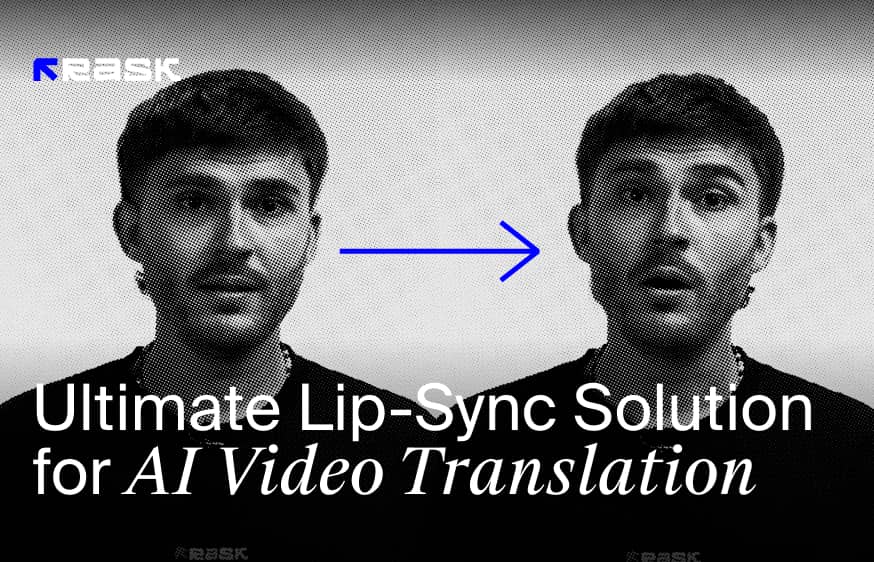
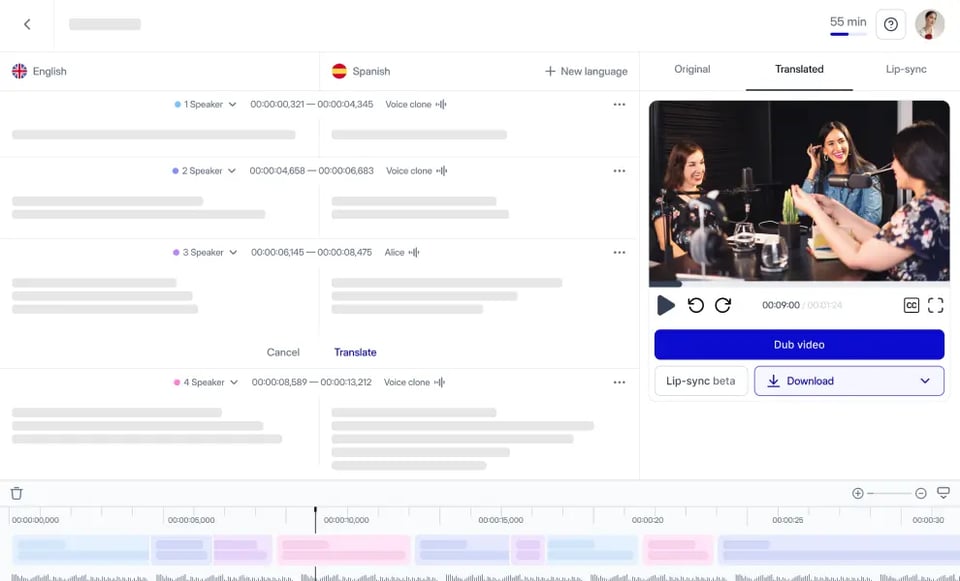
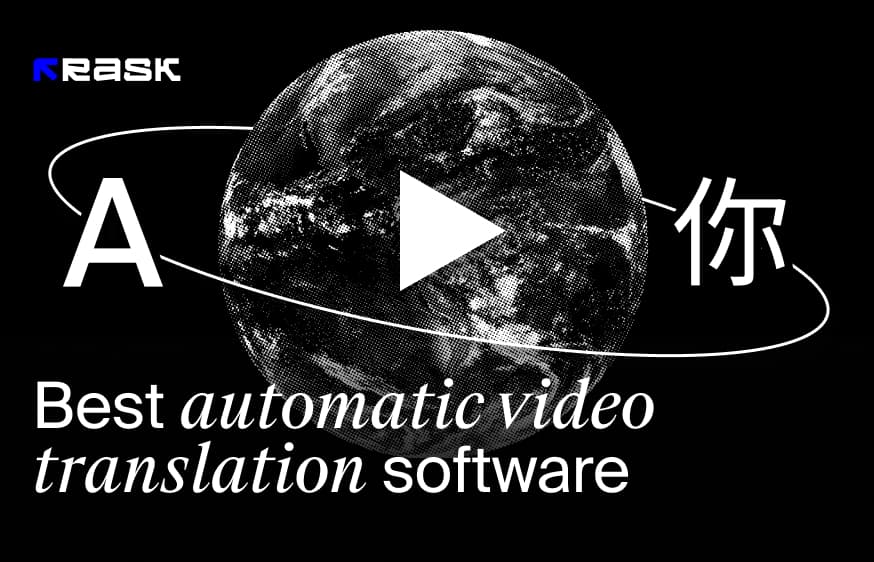
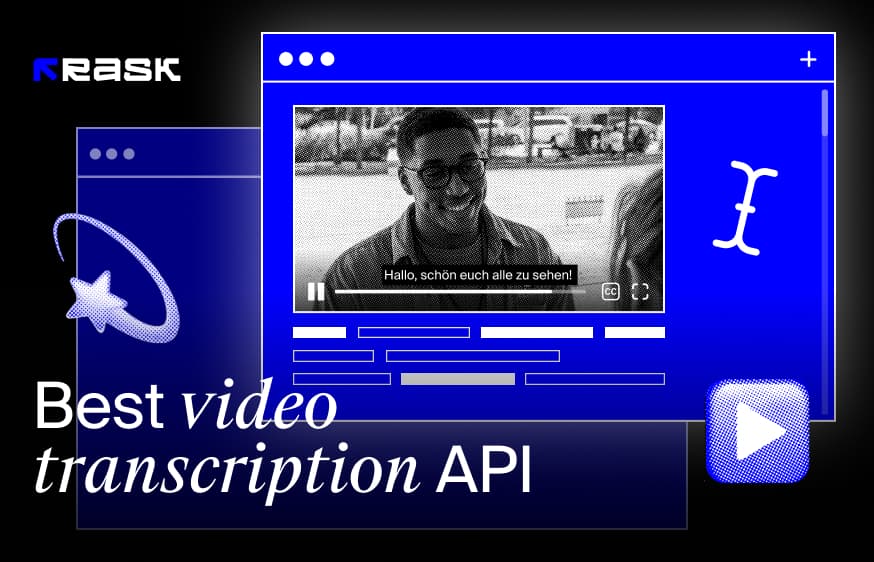
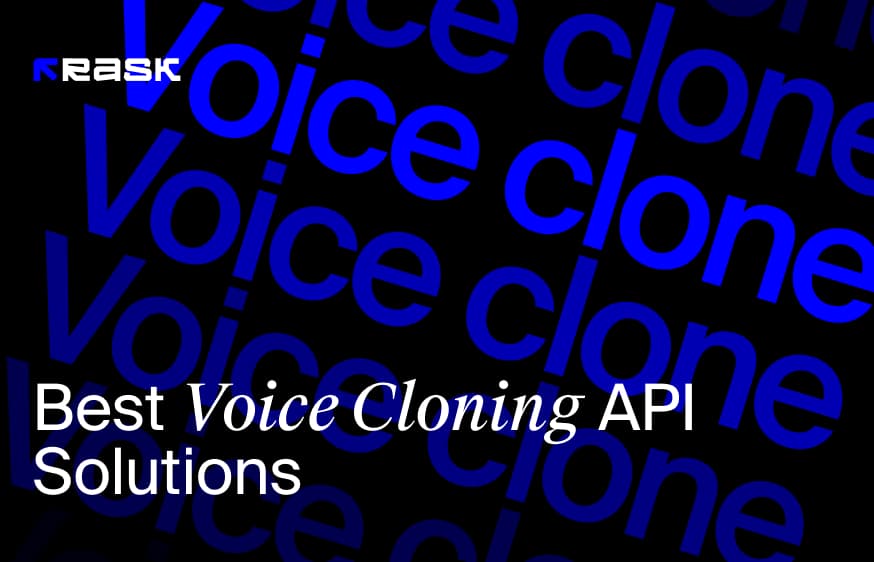
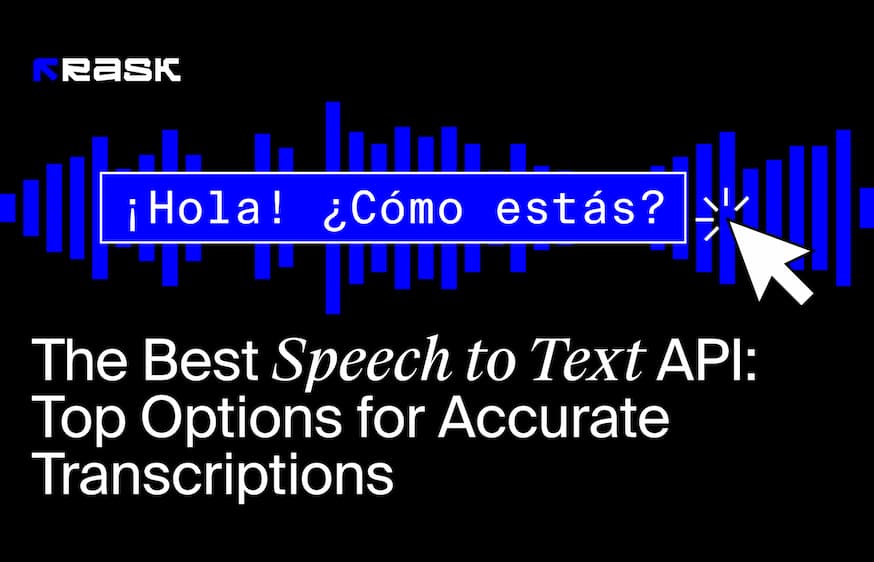

.jpg)
.webp)
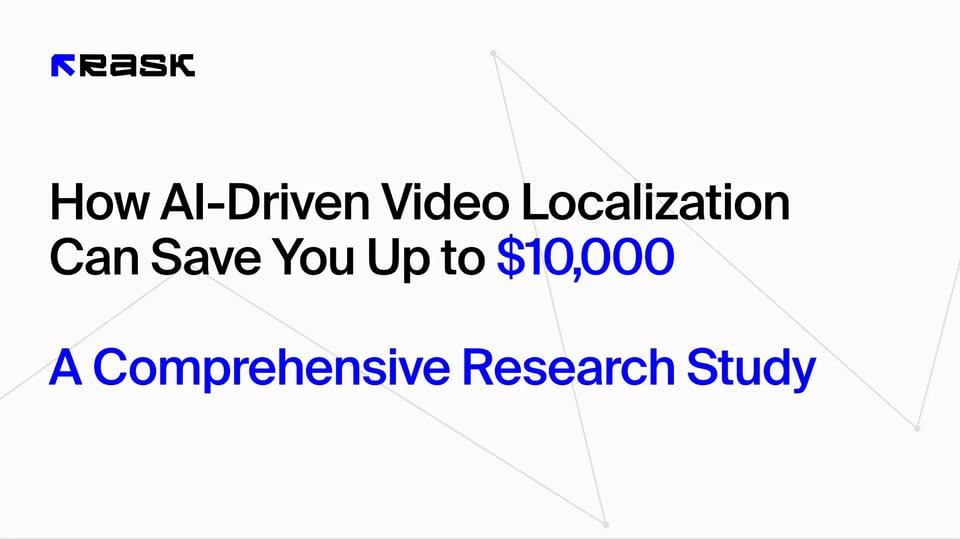
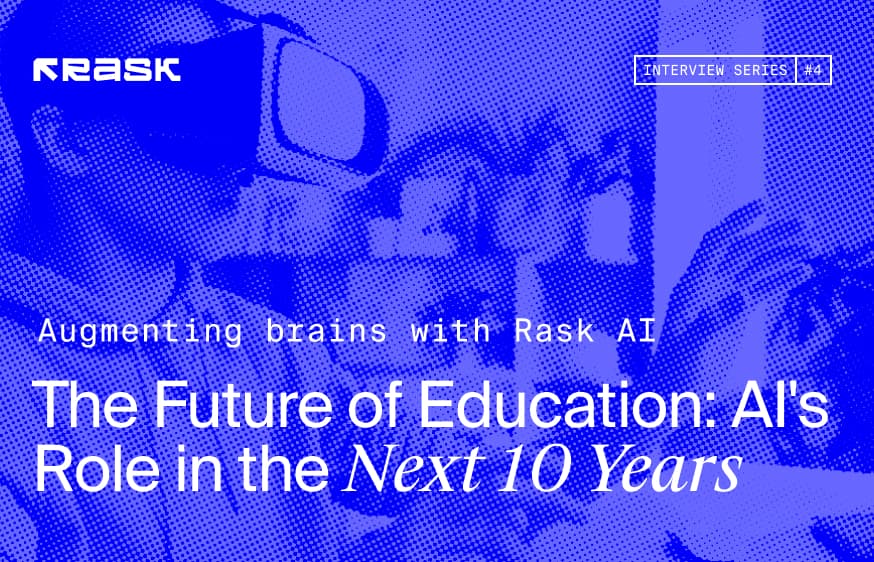
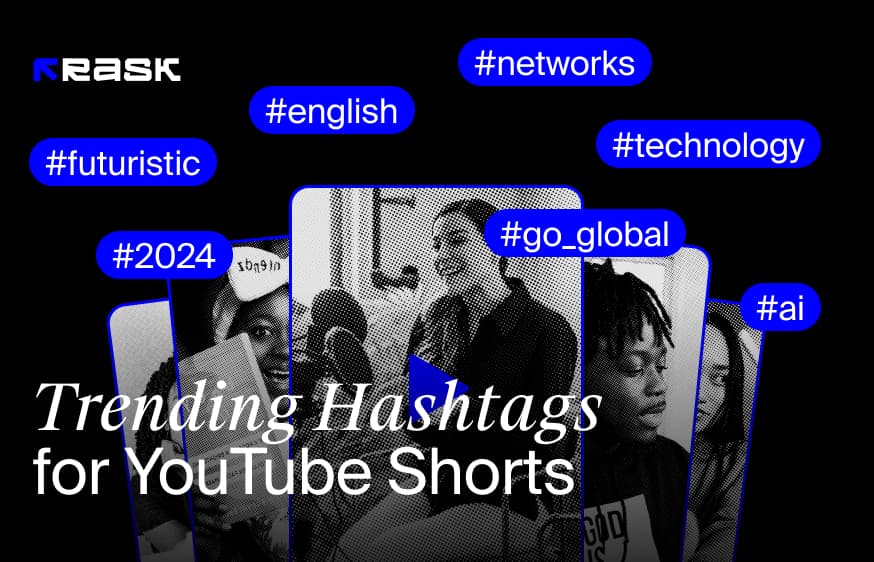
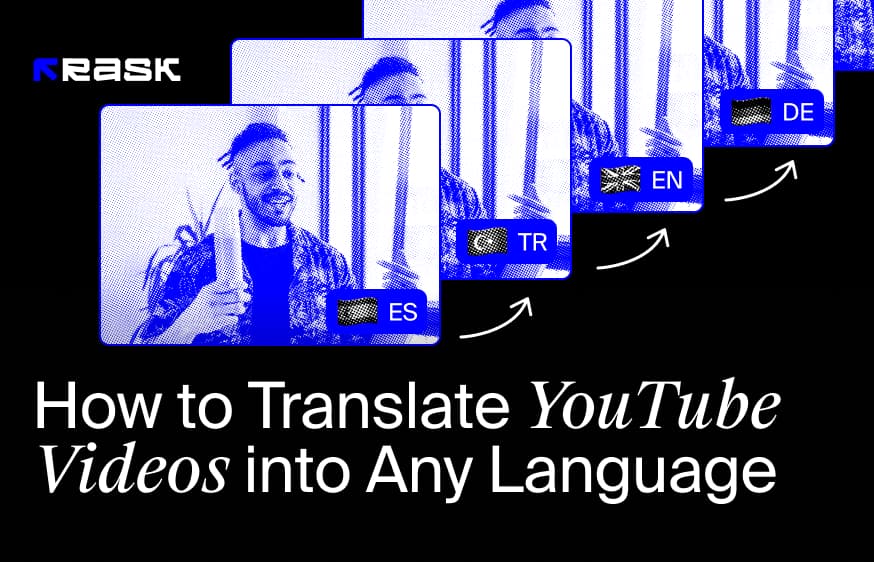
![8 Best Video Translator App for Content Creators [of 2024]](https://rask.ai/cdn-cgi/image/width=960,format=auto,fit=scale-down/https://cdn.prod.website-files.com/63d41bc99674c403e4a7cef7/6668a3dcd3175bd1d1c73c81_Best%20video%20translator%20apps%20cover.webp)
![Best AI Dubbing Software for Video Localization [of 2024]](https://rask.ai/cdn-cgi/image/width=960,format=auto,fit=scale-down/https://cdn.prod.website-files.com/63d41bc99674c403e4a7cef7/66685014f68137eb05c89c16_Cover.webp)
